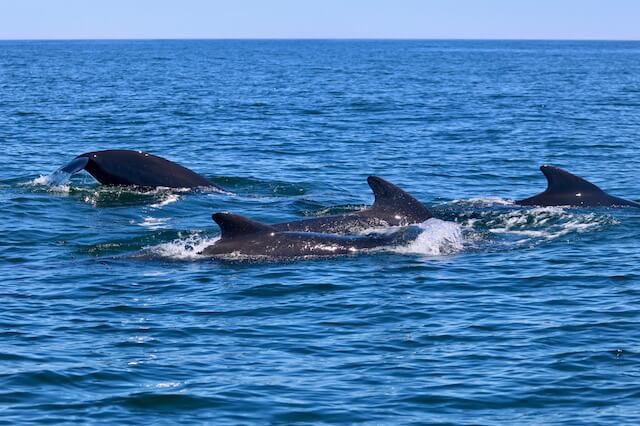By Stéphanie Tremblay
The differences between certain species are sometimes so imperceptible that they may be mistaken for one another. Pilot whales in particular resemble each other with a few key differences. Are the pilot whales that are occasionally observed in the St. Lawrence River the same as those found in the Caribbean?
Two species of pilot whales exist: Globicephala melas and Globicephala macrorhynchus. They both live in similar environments, but in different parts of the globe.
Globicephala melas have an anti-tropical distribution. The northern populations of the long-finned pilot whale are found farther north, i.e. in the waters of Greenland, Iceland, the Barents Sea or the western Mediterranean. Globicephala melas edwardii, meanwhile, lives in the southern hemisphere, near the South Pole, and sometimes even near the Antarctic coast. This species is therefore found only in cool and temperate waters and in subpolar regions.
The broad band of warm temperate waters around the Equator that Globicephala melas avoids is occupied by the short-finned pilot whale (Globicephala macrorhynchus). The latter resides in warm temperate waters in more tropical and subtropical environments.
Globicephala found in the St. Lawrence are therefore long-finned pilot whales, while those living in the warm waters of the Caribbean belong to the short-finned species.
They look quite similar, so it is possible to mistake one species for the other. The main visual difference between the two species is the size of their pectoral fins. As their name suggests, short-finned pilot whales have smaller fins. They also have fewer teeth. The shape of the spot on the belly differs as well: a white anchor can be discerned on long-finned pilot whales, while their short-finned cousins feature a line that is narrow toward the throat and more diffuse toward the uro-genital region.
Since only the top part of their bodies is visible above the water surface, differentiating them visually is challenging. When swimming, their fins are difficult to observe and their spots are masked by the water. Moreover, their ranges are not as fixed as land borders. The two species can sometimes be found in the same waters, which further complicates identification. Nevertheless, thepilot whales in the St. Lawrence are always long-finned pilot whales, since Quebec is much too far north for the short-finned pilot whales of the Caribbean.
Pour en savoir plus
- (2002) Knopf, A.A. Guide to Marine Mammals of the World. National Audubon Society.







